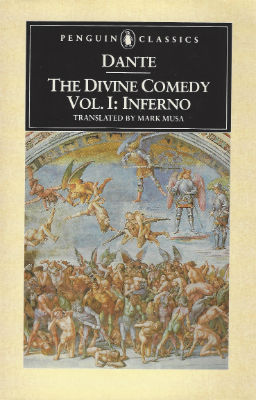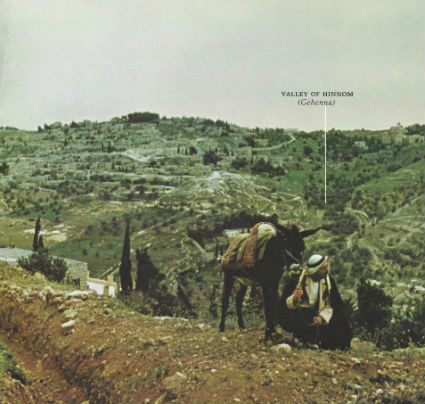 Recent movie starring Robin William based on Dante's one-dimensional view of Hell as a fiery location.
Recent movie starring Robin William based on Dante's one-dimensional view of Hell as a fiery location.By Neil Earle
 Recent movie starring Robin William based on Dante's one-dimensional view of Hell as a fiery location.
Recent movie starring Robin William based on Dante's one-dimensional view of Hell as a fiery location.There is no more disturbing subject yet none more wondered about.
Most of what follows is from the GCI.ORG web site which offers a balanced and careful perspective. Hell is complicated because the King James translators chose to use that one word to translate what is in fact four Hebrew/Greek words of widely different meaning. They are
1. The OT SHEOL (a dark mysterious place – see Job 10:20-22),
2. Greek HADES (the Underworld to the Greeks – a place of burial – see Acts 2:31 especially in the New King James Version).
3. GEHENNA (based on the Jerusalem garbage dump in Jesus’ day where children were burnt in the fire in 2 Kings 23:10 but depicted as a place of unquenchable fire in Jewish theology). The concept flows on from fire symbolizing purging in Deuteronomy 32:22 (The New Bible Dictionary, page 463).
4. Tartaroo (used just once in 2 Peter 2:4 as place of restraint for fallen angels).
No wonder there is such divergence in Christian thinking on this subject.
Taking note of all the above, it is nevertheless a central overall point that this subject soon leads into a much more wide-ranging and important Biblical theme than just an interesting word study. The subject of Hell points to issues of God’s fairness and sovereignty. Can we trust God to do the right thing by all the people who have lived? All of us sinners, except one. And as soon as we raise this question we know we need to bring a wider angle of vision to bear.
Also, kept in mind that – as with the theme of heaven – we are often limited in trying to define the subject too precisely (1 Corinthians 2:9). This is why studying the varied views across the centuries will slowly reveal some important truths about what God wants us to learn from this teaching.
 Dante's writings fixed a fiery picture of Hell on the Western world.
Dante's writings fixed a fiery picture of Hell on the Western world.Here are the main views:
1. A Blazing Underworld. Bible teachers use “fire” as a symbol of coming judgment. Yes Jesus spoke quite vividly about this – see Matthew 3:11-12, 18:8-9. Dante took this quite literally in the 1300s, however, and his focus on fiery judgment separated from God’s ultimate nature of love has burnt itself into the consciousness of the Western world. But “fire” ranks right up there when we are discussing a “Biblical mosaic” on how to approach Hell.
2. Temporary Punishment. Purgatory also traces back to Dante and Jesus did use some terms and concepts that could be used to imply a kind of remedial non-fatal punishment. See Luke 12:47-48 where those who did not know God’s will received “fewer stripes.” And in Matthew 10:15 and 11:24 he talked about it being more tolerable for Sodom in the judgment than the First Century cities who were rejecting him. Interesting. Gradations of punishment are a view we have to reckon with here.
3. Eternal Punishment – consider such terms used as “outer darkness” in Matthew 8:12 and Jude 13 – “the blackness of darkness” reserved for wandering spirits. This again shows the impossibility of making any one description of Hell cover all the bases. For example, there is the Bottomless Pit reference in Revelation as place for Satan and his minions. All these colorful word pictures – for that is what they are – cannot be harmonized. So we need to think that perhaps in all these descriptions God is nudging us to draw out something deeper than real events to occur in time and space.
4. Annihilationism – People cite Matthew 10:28, that even the soul can be destroyed. Revelation 20:14 mentions the second death, and everlasting destruction is introduced in 2 Thess. 1:5.
 In a California Baptist University dramatization of C.S. Lewis' The Great Divorce an escapee from Hell forsakes Lust at the gates of Heaven.
In a California Baptist University dramatization of C.S. Lewis' The Great Divorce an escapee from Hell forsakes Lust at the gates of Heaven.“Destroyed in Gehenna,” Matthew tells us so one thing seems certain – the wicked will not evade their fate. Harsh language is on Jesus’ lips quite often because he was so many times in contention with his bitter enemies when he uttered his harshest statements. Church people often misread Jesus’ hard sayings a addressed to them. Context counts.
5. Note the key concepts so far – fire, stripes, darkness, burning up and now SEPARATION is mentioned in 2 Thess. 1:9. This is a popular concept today – the wicked will be not allowed to disturb what God has planned for the rest of his family. “Hell is separation from God” says Billy Graham.
6. Some would add “debt-payment” as a background concept from the words of Matthew 5:24-26. Maybe.
7. Finally, we should mention the psychological hell explained by such Christian writers as C.S. Lewis, Charles Williams and others. Lewis in The Great Divorce depicts a fictitious bus trip out of Hell which he describes as a dingy London suburb full of miserable complaining people who are taken to the outer reaches of heaven. Most of the passengers are invited to stay and enter into the fullness of Heaven but for varied psycho-spiritual hang-ups they eventually turn it down. Pam wants to see her deceased son Michael more than God himself; a vain and scholarly preacher would rather discuss the glories of heaven in a Bible Study “down below” than experience the real thing; a vain painter wants to rush back down to capture the scene on canvas rather than enter into the reality.
Such “lizards of the mind” handicap the denizens of Hell so that they will not be happy with just seeing God or enjoying him forever. So Lewis boldly concludes that Hell is locked from the inside.
 Hinnom Valley along Jerusalem's southern slope where refuse was burned began to symbolize the fate of the wicked in Jewish theology.
Hinnom Valley along Jerusalem's southern slope where refuse was burned began to symbolize the fate of the wicked in Jewish theology.So where are we? It seems that Hell is tied in with the overall subject of God’s sense of judgment and justice. With God’s exquisite sense of justice the wicked get away with nothing. The parable of Lazarus and the Rich Man in Luke 16 shows how a greedy autocrat fashioned his own route to hell with a life of self-centeredness and indifference to suffering (though remember this is a parable not a study of the afterlife).
There is wisdom in the C S Lewis statement “hell is locked from inside.” People forge their own “mind-forged manacles” by the way they react to the things that happens to them here on earth. Strangely, Hell is made up of those who want to be there. They’d rather be in a dingy miserable contentious place called Hell than turn their minds and spirits outwardly in humble surrender to the goodness and greatness of God. Some of our GCI teachers like to go further and say everyone in hell is already forgiven by God through Christ’s vicarious ministry. His own baptism into repentance has “fulfilled all righteousness” and our response must be to accept it in humble surrender (Matthew 3:15). But, as Milton said, some would rather rule in hell than serve in heaven.
The OT in vivid and encouraging passages shows God is sovereign even over Hell (Sheol). “Sheol is naked before him” said the Patriarch Job, “and Destruction has no covering” (Job 26:6 NKJ). Most beautifully and powerfully the Psalmist declares: “If I ascend into heaven you are there; If I make my bed in hell (Sheol) you are there…The darkness and the light are both alike unto you” (Psalm 139: 8-12).
In the end we have to see Hell as a matter of people’s own choices and the rest of us being protected from their evil decisions (1 Corinthians 5 as example). But Hell as a subject is not deigned to be an “out-of-control” phantasmagoria depicted by poets and movies but a sober means of pointing us back to faith, one more lesson in trusting that God is great and that he knows what he is doing.